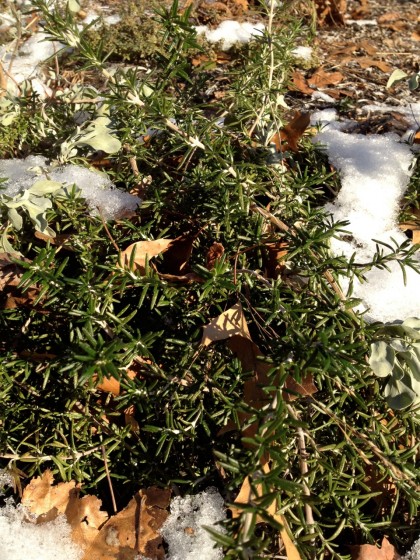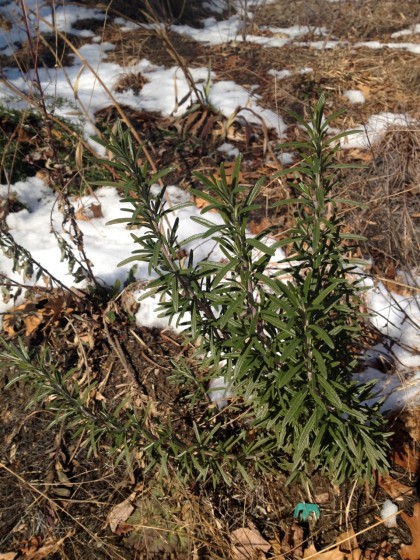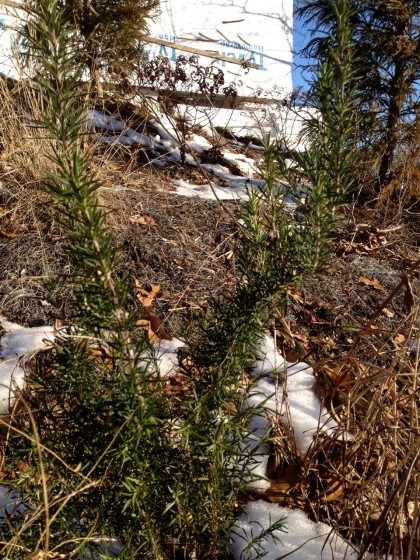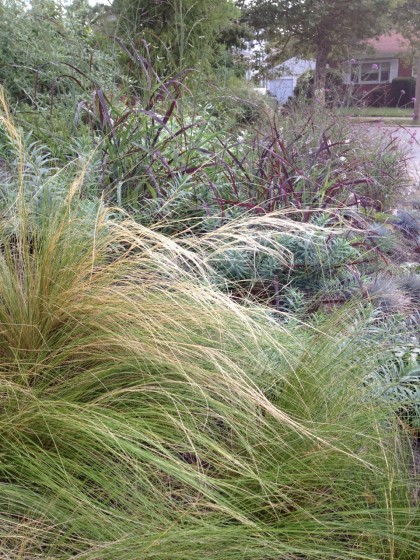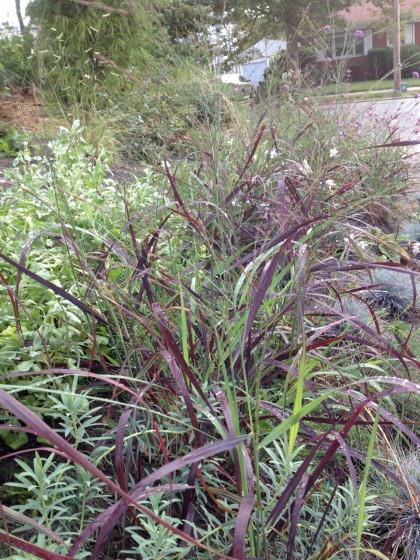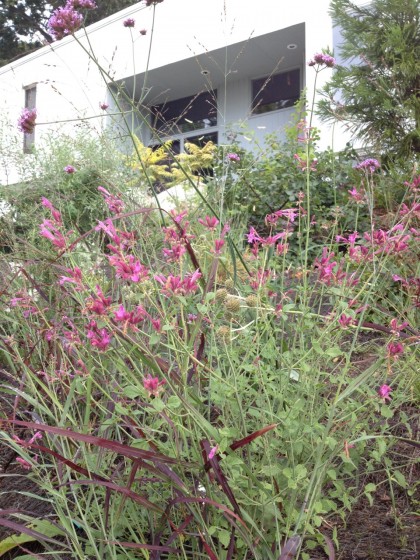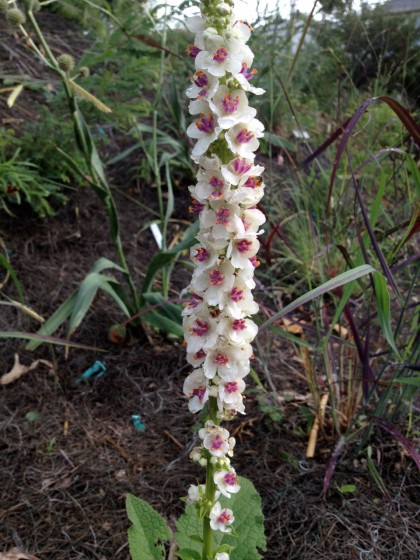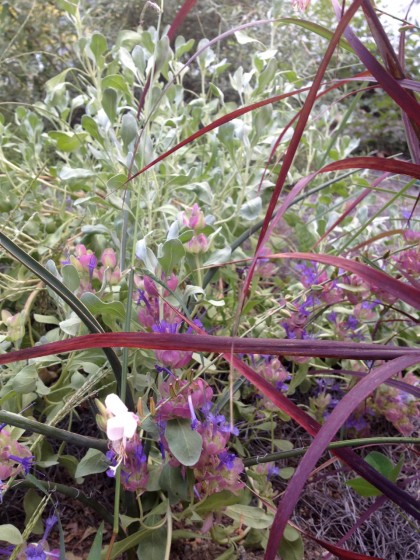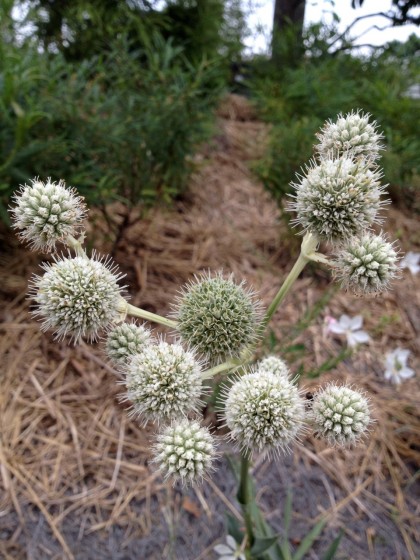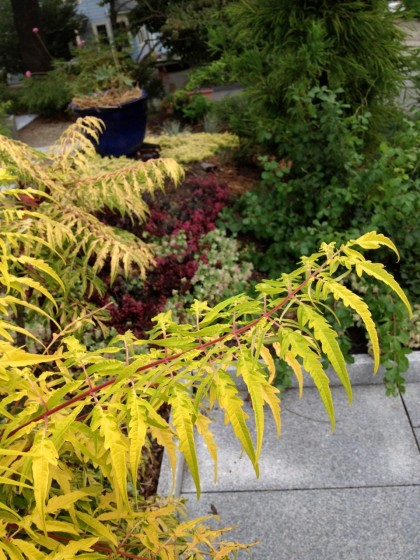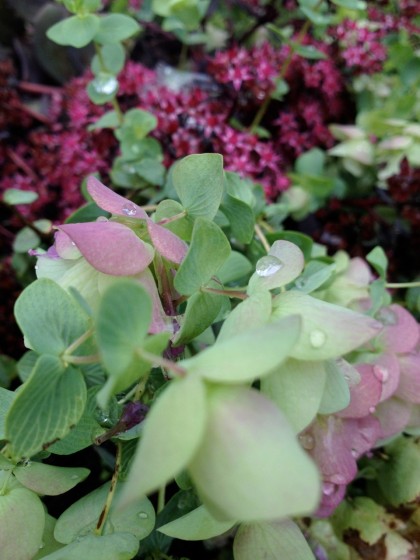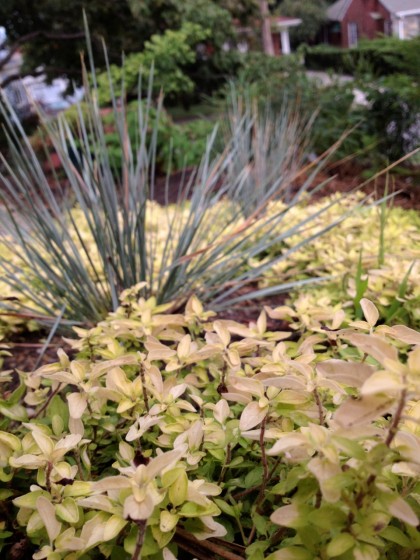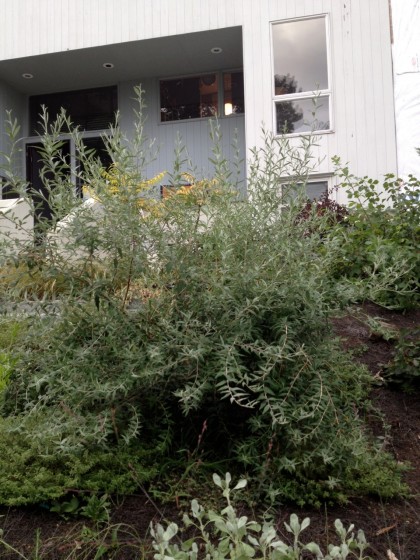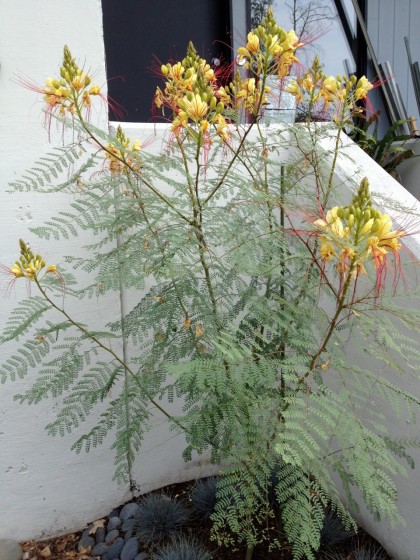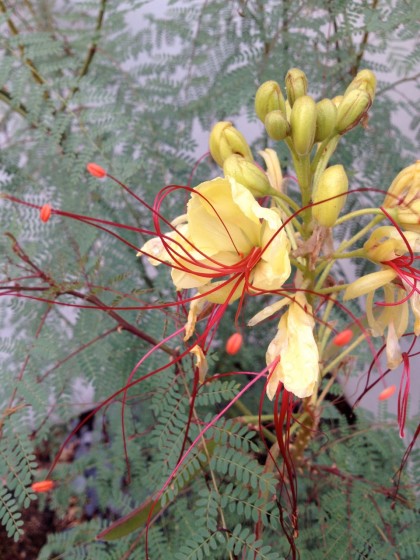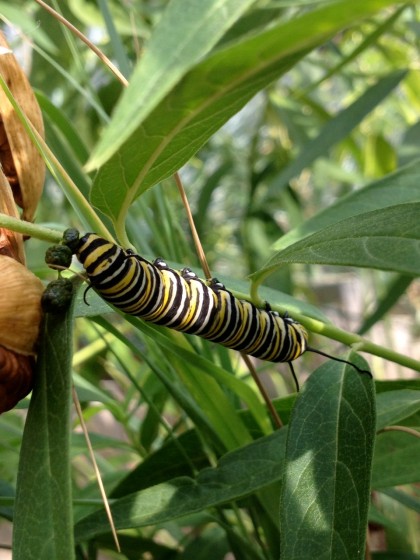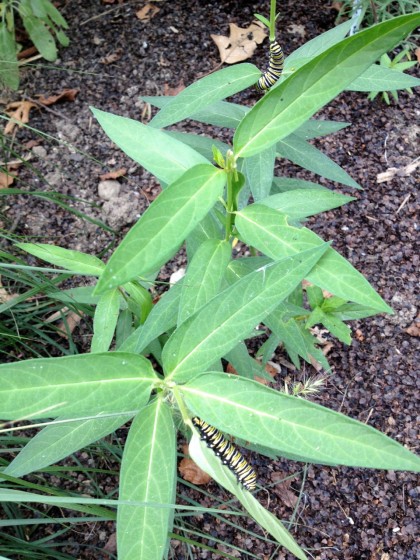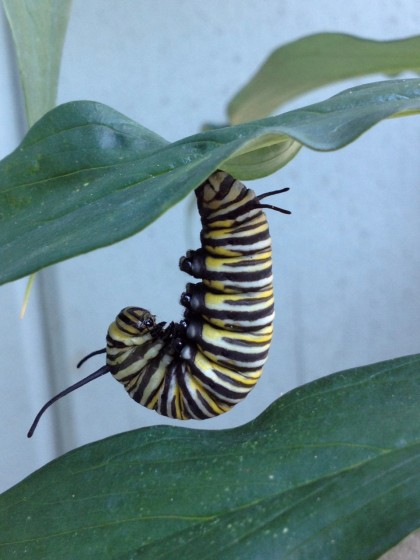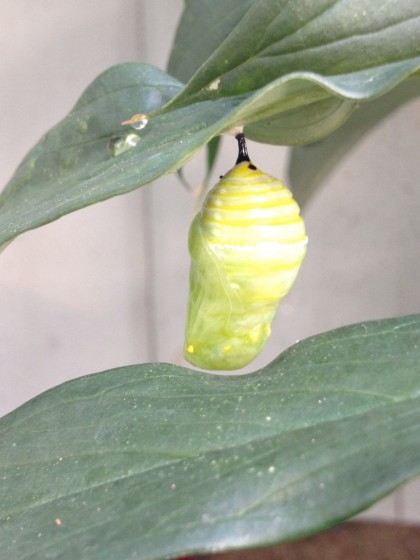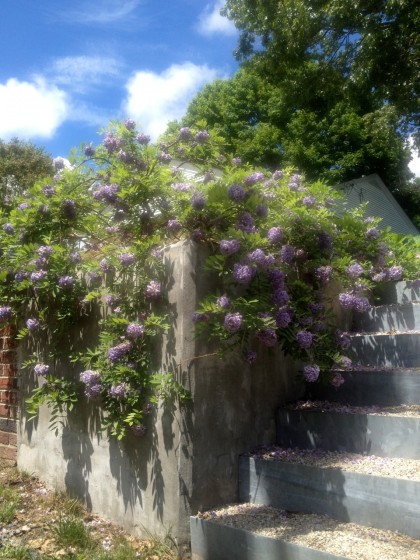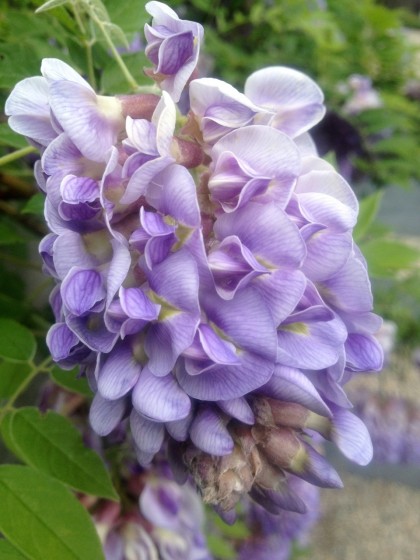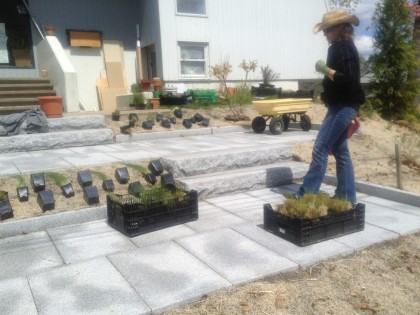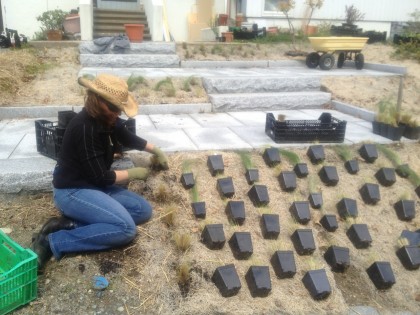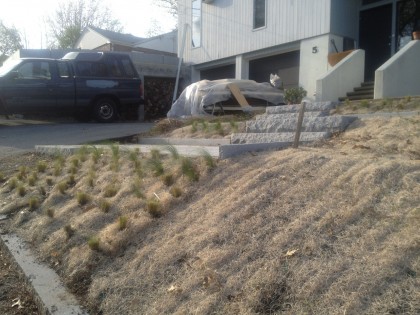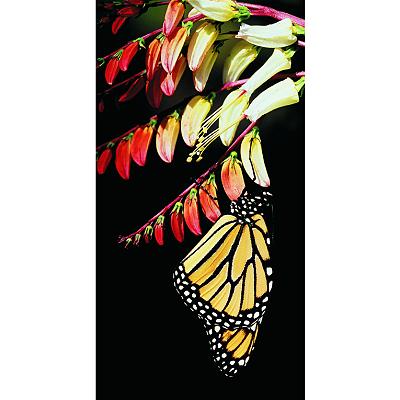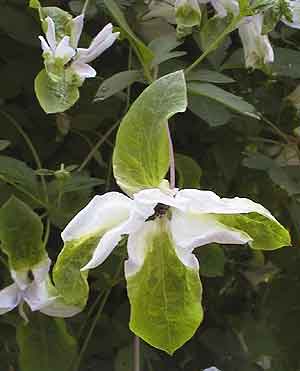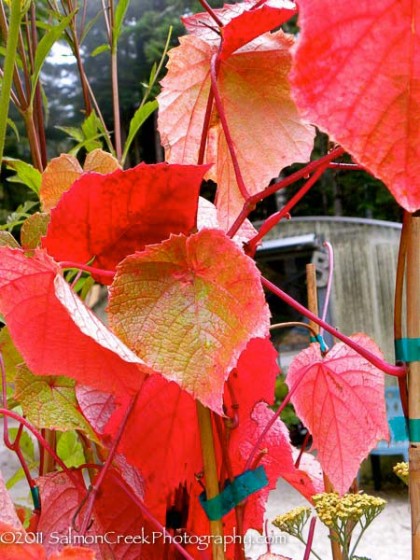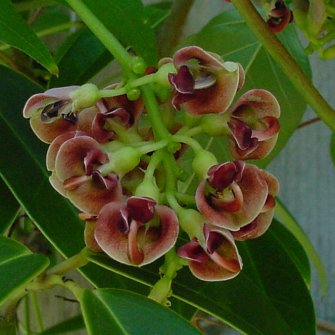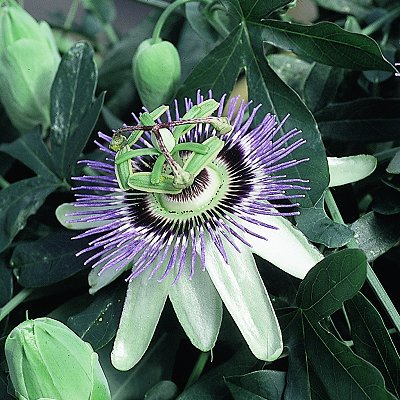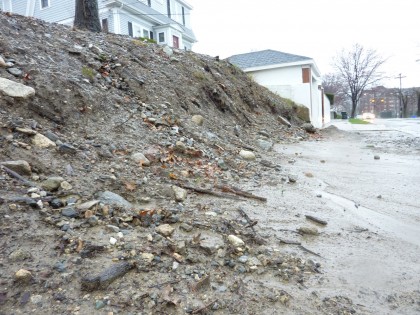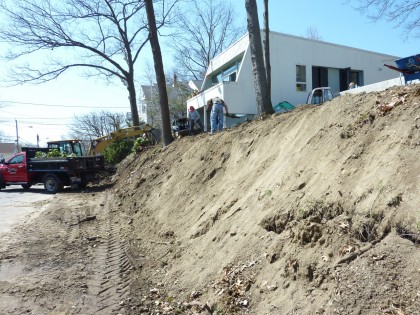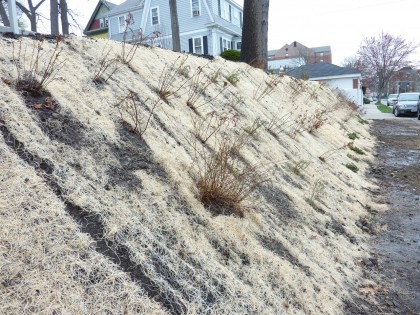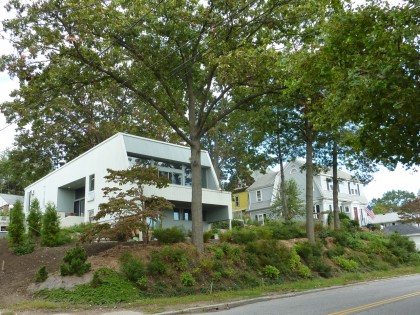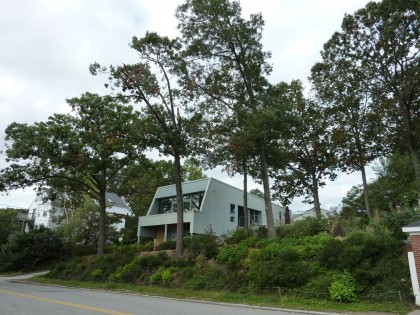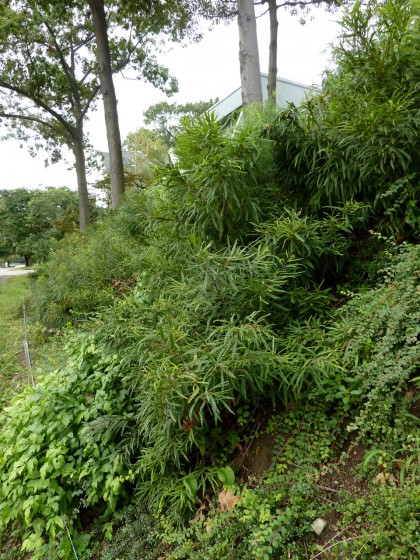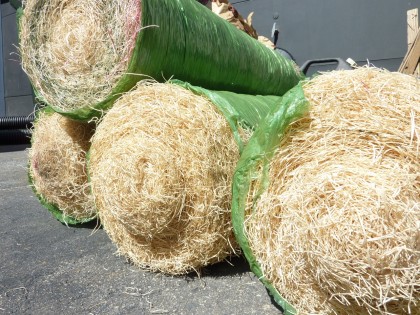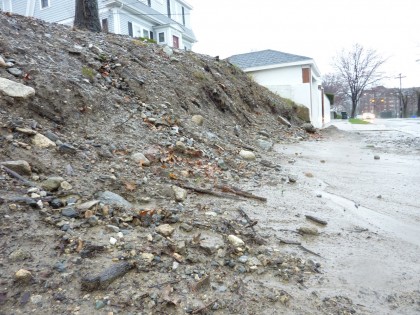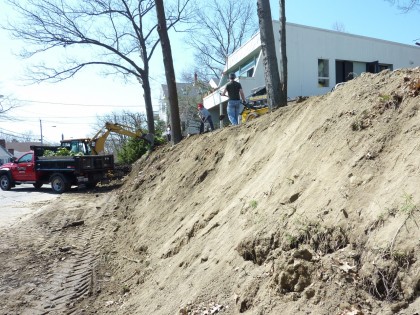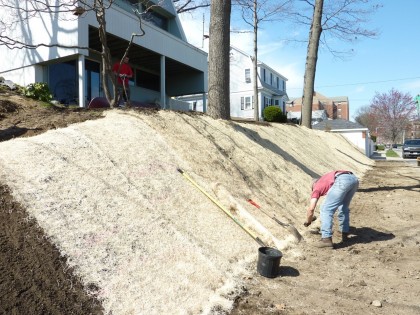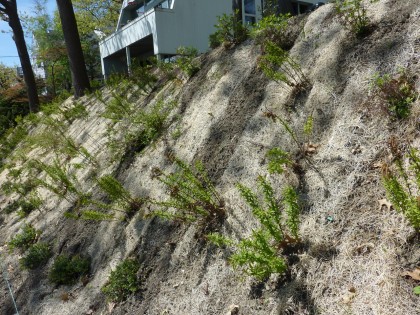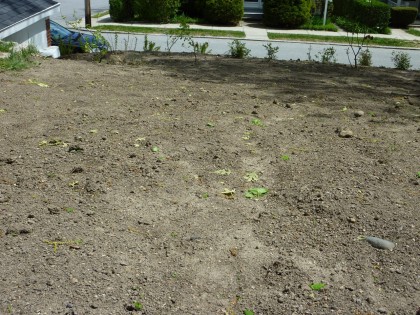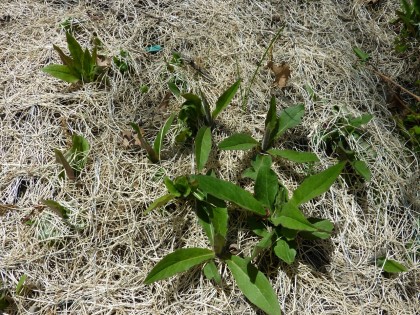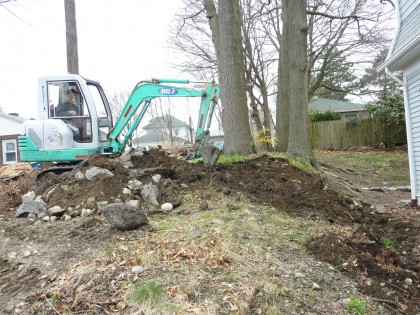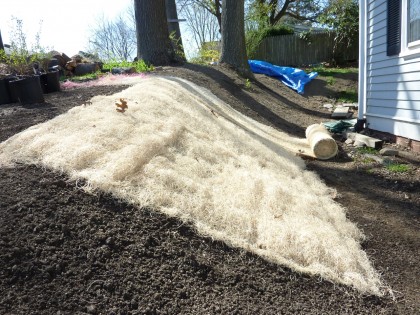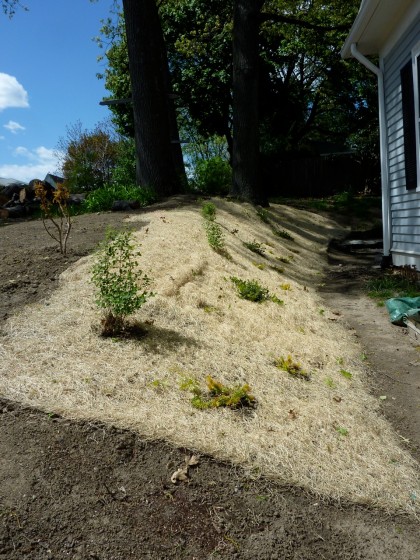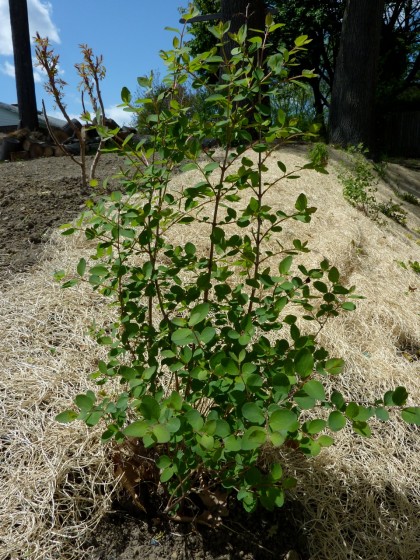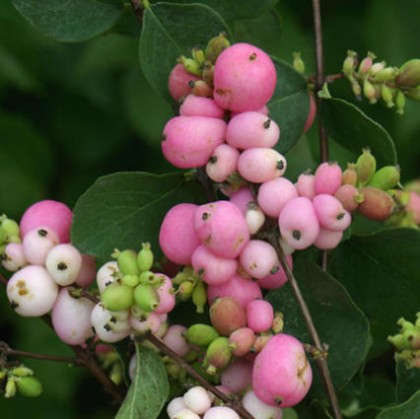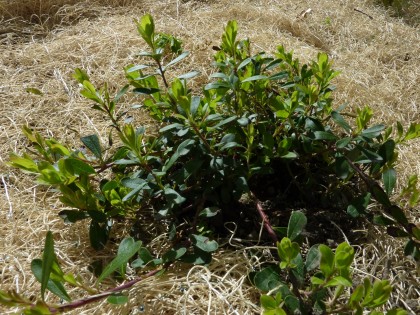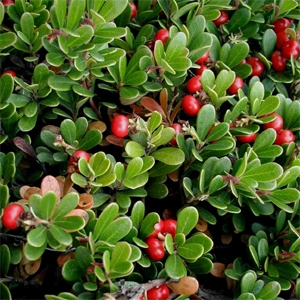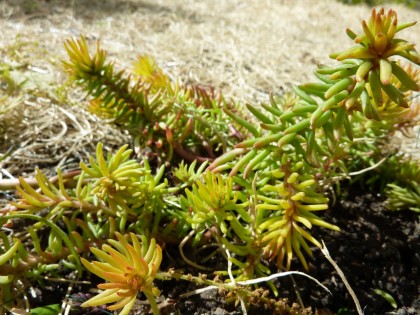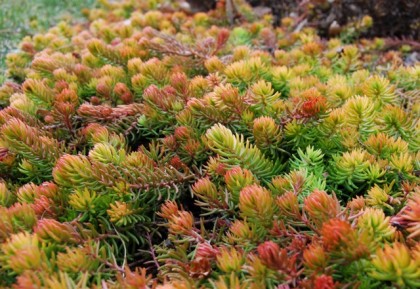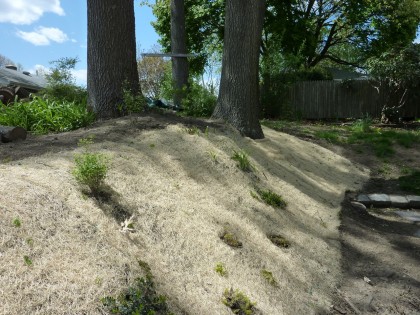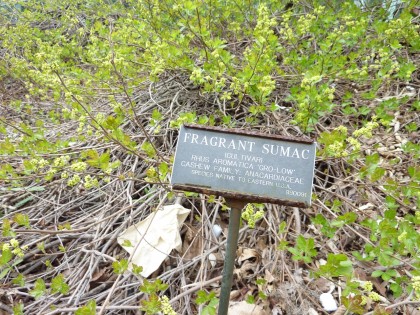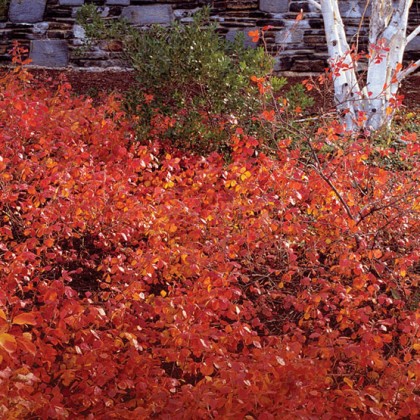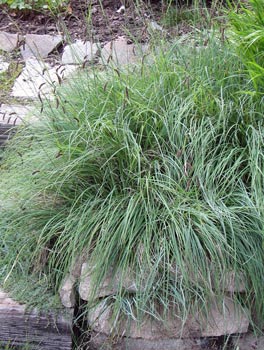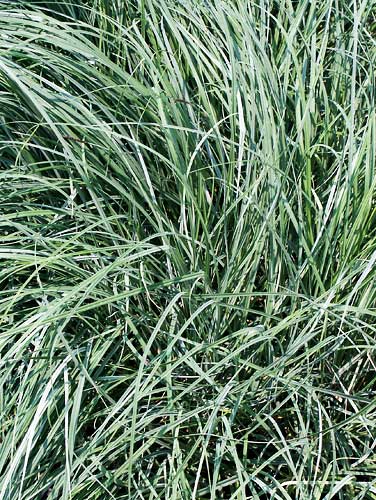So. The front hill. Yes, it’s finally planted! Shall I whisk you back in time before I show you how it looks now?
When we moved in, the yard looked like this (biggify to see the full ugly)…

Since then, the stone was hauled away — you can see the freshly built retaining wall now along the driveway…
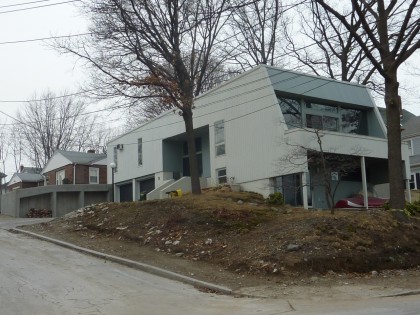
The messy oak tree out front was removed and replaced with three Japanese cedars last fall…
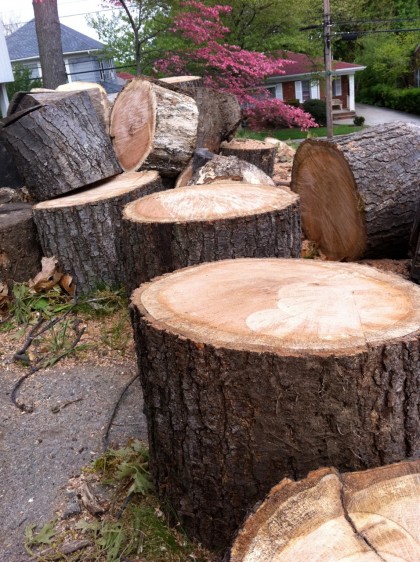
And the tenacious 3′ tall weeds…
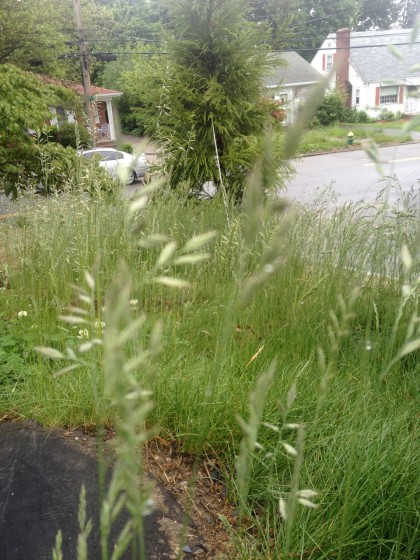
Yeah, I dug those up. Then last December, the front walkway was put in…

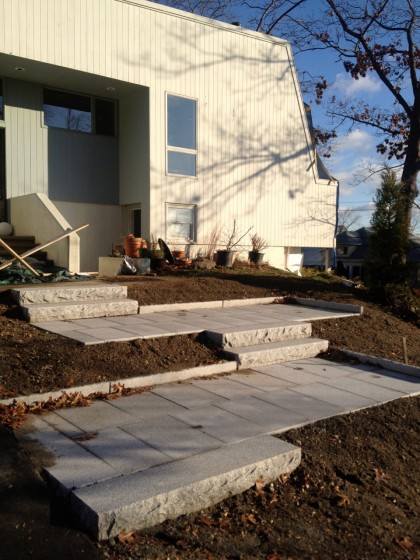
Once that was done, I added a truckload of soil…
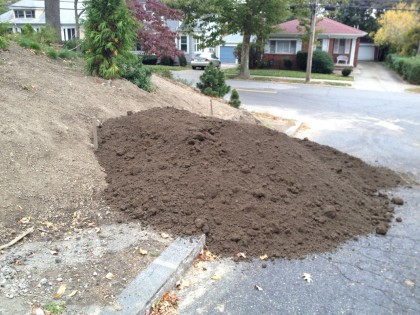
… and sculpted the hill to my liking, creating a series of flat strips to slow the runoff. Just me and a shovel.
And once that was done, I added Curlex erosion control blanket (like we did on the other hill) to hold the slope. You can probably spot the flattish areas if you biggify…
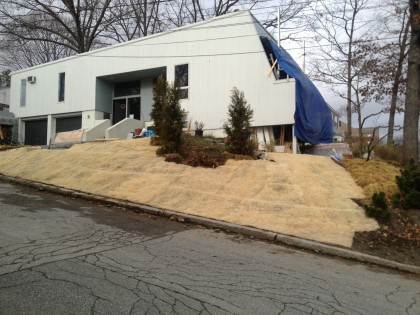
During the winter, I made plant choices plants for this dry, south-facing hillside. I went with mostly Mediterranean and hardy, xeric, native plants that wouldn’t mind the rocky, sandy soil, wind and summer heat — grasses and perennials that will grow up into a bee/butterfly/hummingbird meadow. The closer to the house, the tighter, more regimented the layout. The farther away, the looser, more organic the layout.
In March, I started shoving the shrubs I’ve been saving into the ground. Then the boxes of plants for the front hill started arriving from various online sources…
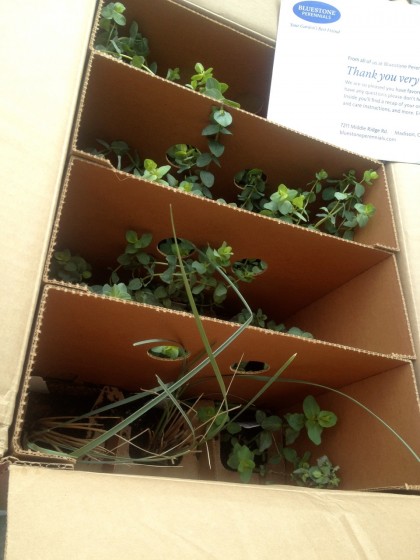
Shiva stopped by in April to help lay out the Nassella tenuissima (Mexican Feather Grass)…
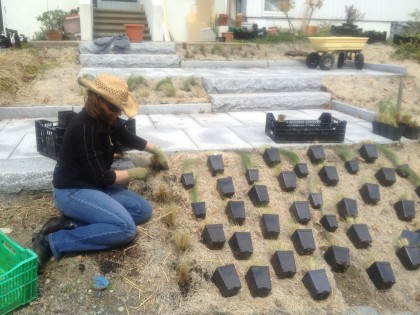
After that, I became the Mad Planter, popping plants in the ground at every opportunity. Then Shiva and Natasha came and helped with the final push…
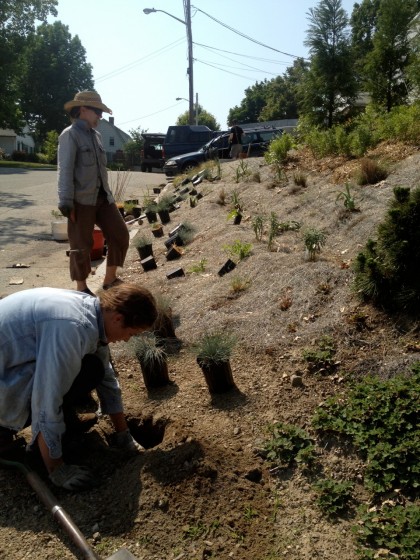
Thank goodness because if they hadn’t I probably wouldn’t have finished until July. I’m guesstimating but there are probably around 400 plants in. I should do a final count.
Although this is about as anti-climatic as a Mad Men end-of-season episode, here’s the not-so-big reveal (again, you might want to biggify):

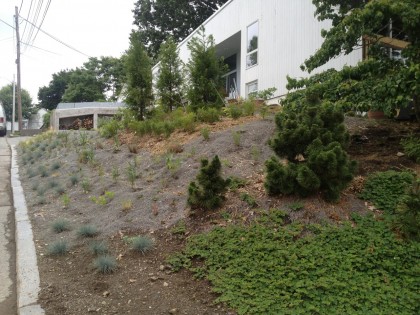
Except for a few holdovers from pots, the plants are all tiny and won’t look like much the first year. If they grow in like my meadow out back, next summer you’ll see a huge difference.
In the meantime, have a closer look at a few bright spots…
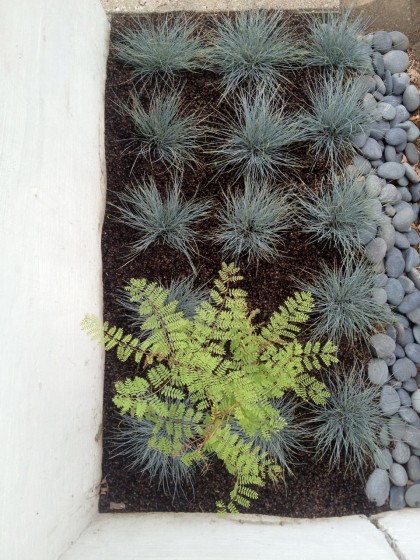
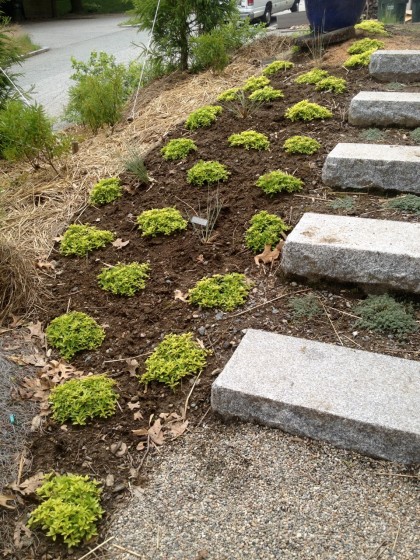
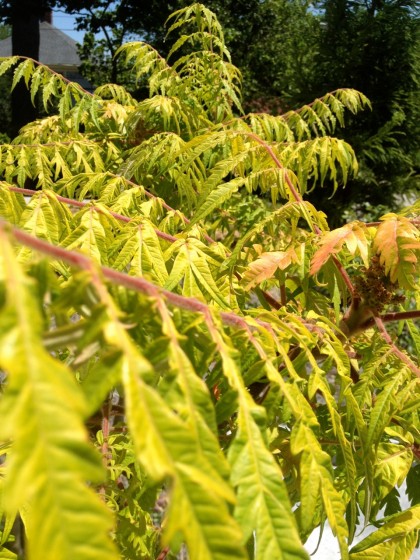
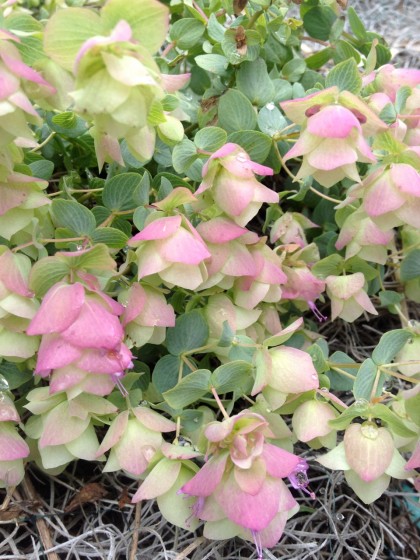
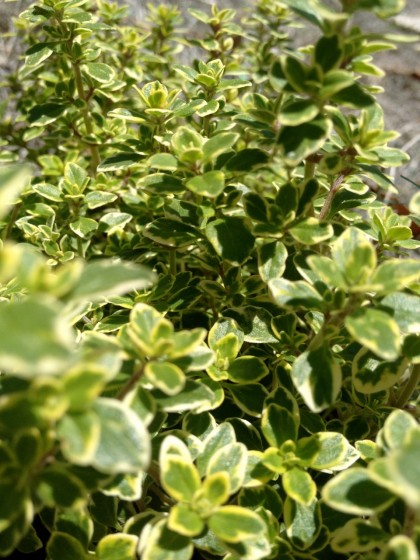
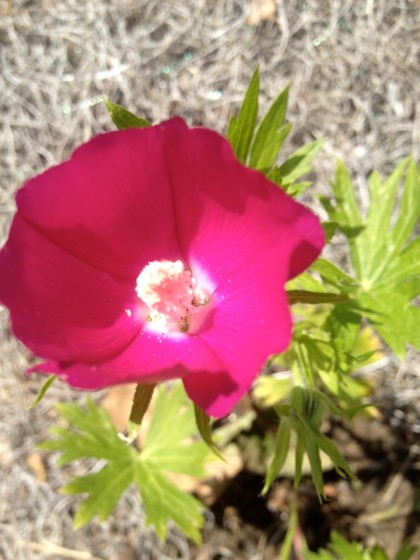
For those who care, below is a list of what you’ll find on my front hillside. For visuals, pop up my Pinterest plant menu page…
Grasses
Bouteloua gracilis ‘Blonde Ambition’ (Blue Grama)
Festuca glauca ‘Elijah Blue’ (Blue Fescue)
Helictotrichon sempervirens ‘Sapphire’ (Blue Oat Grass)
Nassella tenuissima (Mexican Feather Grass)
Panicum virgatum ‘Ruby Ribbons’ (Switch Grass)
Schizachyrium scoparium ‘The Blues’ (Little Bluestem)
Sporobolis heterolepis (Prairie Dropseed)
Groundcovers
Origanum vulgare ‘Aureum’ (Golden Oregano)
Origanum rotundifolium ‘Kent Beauty’ (Ornamental Oregano)
Rosmarinus officianalis ‘Prostratus’ (Creeping Rosemary)
Rubus pentalobus (Creeping Raspberry)
Thymus × citriodorus (Lemon Thyme)
Thymus lanuginosus (Wooly Thyme)
Perennials
Agastache ‘Ava’ (Hummingbird Mint)
Amorpha canescens (Leadplant)
Amsonia hubrechtii (Threadleaf Bluestar)
Callirhoe involcrata (Purple Poppy Mallow)
Eryngium yuccafolium (Rattlesnake Master)
Gaura lindheimeri ‘Whirling Butterflies’
Geum trillium (Prairie Smoke)
Lavendula x intermedia ‘Grosso’
Petalostemon Purpureum (Purple Prairie Clover)
Rosmarinus officinalis ‘Alcalde’ (Cold Hardy Rosemary)
Rosmarinus officinalis ‘Arp’ (Cold Hardy Rosemary)
Salvia pachyphylla ‘Blue Flame’ (Giant Purple Sage)
Verbascum nigrum ‘Album’ (Mullein)
Verbena bonariensis (Tall Verbena)
Shrubs
Baptisea lacteal (False White Indigo)
Buddleia alternifolia ‘Argentea’ (Silver Fountain Butterfly Bush)
Caesalpinia gilliesii (Yellow Bird of Paradise)
Comptonia peregrina (Sweetfern) — to echo the sweetfern we used on the other hillside
Rhus aromatica ‘Gro-Low’ (Fragrant Sumac)
Rhus typina ‘Bailtiger’ (Tiger Eye Sumac)
Trees
Cornus florida (American Dogwood) — the one and only thing original to the hillside!
Cryptomeria japonica ‘Yoshino’ (Japanese Cedar)
Pinus thunbergii ‘Thunderhead’ (Japanese Black Pine)
Succulents, Yucca and such
Euphorbia niciana x nicaeensis ‘Blue Haze’ (Cushion Spurge)
Euphorbia myrsinites (Donkeytail Spurge)
Euphorbia characias ssp. wulfenii ‘Shorty’ (Cushion Spurge)
Hesperaloe parviflora (False Red Yucca)
Sedum rupestre ‘Angelina’
Orostachys iwarenge (Chinese Dunce Cap)
